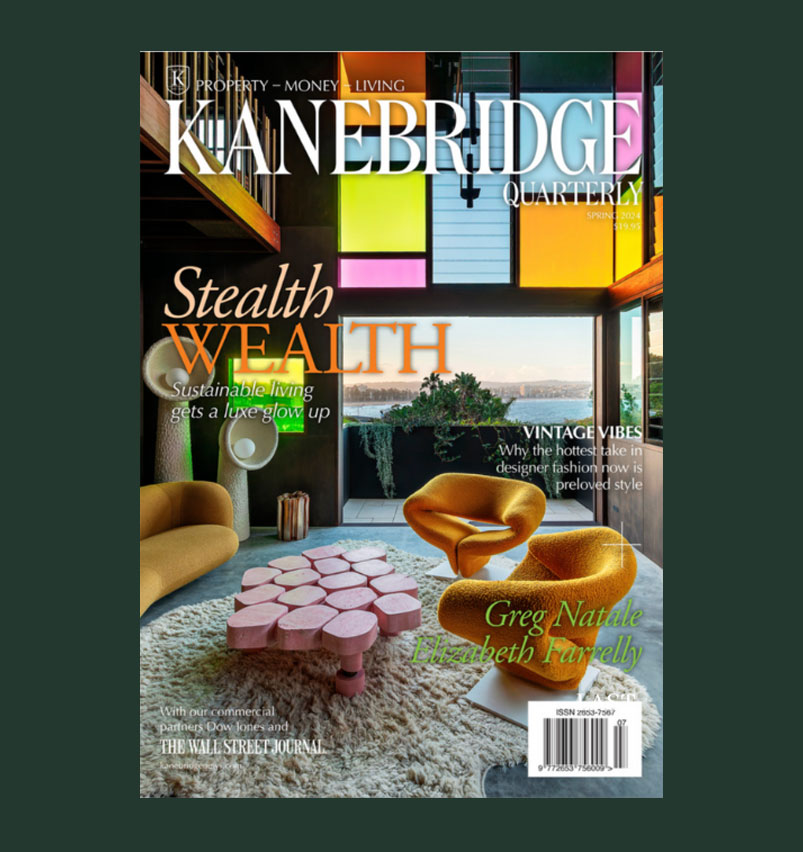Next to Tesla, Plug-In Hybrids Are an Illusion of Eco-Consciousness
Plug-in hybrid electric vehicles often have short electric ranges and do little to improve overall fuel efficiency.
AS I WAS RAGING NORTH toward Switzerland in the 735kW Ferrari SF90 Stradale in July, I was feeling pretty good about myself. After all, I was saving the Earth.
The Stradale is a plug-in hybrid electric vehicle (PHEV)—powered by a twin-turbo V8 (about 581kW) assisted by three electric motors and a lithium-ion battery pack. The idea is that Juan-Philippe Cliente, or his manservant, will plug in the Ferrari at night so that it may provide electric-only driving range in the morning. Notionally, the Stradale’s hybrid design will allow it to operate in European cities’ low-emission zones.
With its battery fully charged (7.9 kWH), the Stradale can achieve admirable efficiency of 4.6l per 100km, according to the EPA. But penny-pinchers need to check the fine print. That applies only to the first 13km. Practically within sight of my hotel in Maranello, Italy, the Stradale had devolved into its baser, grumbling, petrol-powered nature—albeit with a kind of Prius-of-the-gods electric torque assist.
Thirteen kilometres.
The Stradale has plenty of company in Crazytown. The PHEV version of the Bentley Bentayga can waft silently only about 29km, officially; the Jeep Wrangler 4xe, 33. Porsche Cayenne E-Hybrid, 27. These short electric legs—combined with powerful internal combustion (IC) engines—do almost nothing to improve overall fuel efficiency. Why do manufacturers even bother?
Like most PHEVs—only slightly more so—the Stradale is a compliance baby, with a powertrain designed to meet soaring vehicle emissions/consumption requirements in major vehicle markets, using de minimis electrical systems added to IC powertrains. In some respects PHEVs are a technical echo of a time not long ago—2010—when such machines were being showered with public money and held to wildly unrigorous standards.
To cite but one notorious example: The Stradale (US$663,623, as tested) qualifies for $3,501 in public money meant to encourage reduced consumption. Thirteen kilometres.
That party is about to be over. Under the Biden administration, new federal PHEV standards are expected to be more “robust,” in the gentle lingo of policy makers.
How robust? In many respects the California Air Resources Board (CARB)—with authority to set its own vehicle emission standards and penalize offending automakers—is already there. For example, the state has a price cap of $60,000 for qualifying vehicles in the state’s Clean Vehicle Rebate Project. As of April 6, 2021, qualifying PHEVs must also achieve a minimum 48km of EPA-measured electric range to qualify for the Clean Vehicle Rebate Project tax credit. By dint of this one rule change, California buyers of more than a dozen new PHEV vehicles, from Bentleys to Volvos, no longer qualify.
Sacramento is now drafting the state’s Advanced Clean Car II language, applying to model-year vehicles beyond 2025. Qualifying PHEVs might then need to deliver a proposed 80km of all-electric range. The state may also put a 15% cap on what are called “historical” PHEV credits claimed by a manufacturer.
What comes next is a fight over standards and timetables, credits and penalties. Mercedes-Benz, GM, Toyota and Stellantis NV, to name four big pickup/SUV players in the U.S., need PHEVs to contribute to their bottom-line Corporate Average Fuel Economy (CAFE) and other emissions targets for the balance of the decade. They will also need consumer-facing tax credits because, with two power systems aboard, PHEVs typically cost several thousand dollars more than a conventional vehicle.
You might be wondering how it all could have gone so wrong for PHEV, a powertrain architecture that once seemed so logical as to be inevitable? In brief, there are two kinds of PHEVs: short-range and long-range. PHEVs with more than about 37 miles of EV range—like the Chevrolet Volt (2011-2019)—do meaningfully displace petrol-driven kilometres, reduce emissions and save consumers money, according to a 2019 report by UC Davis International EV Policy Council.
But short-range PHEVs—the vast preponderance on the market—don’t, except in limited conditions. Why? It’s behavioural. Studies show that the shorter a vehicle’s all-EV range, the less likely owners are to bother charging overnight. And, when owners don’t charge overnight, PHEVs calculations of efficiency go upside down in the morning. Actually, a short-range PHEV with a flat battery is lugging around a lot of useless weight.
Charging PHEVS on the go can also be comically difficult since few are capable of fast-charging.
PHEVs may yet have a bigger problem: NOX, or nitrous oxide, a hazardous smog-forming product of combustion. At a workshop in May, CARB officials raised concerns about PHEVs’ excessive NOX emissions during full-power cold starts, as when an IC engine kicks on after a period of electric driving. One probable explanation: Emission-scrubbing catalytic converters in exhaust systems only work after they are well heated by the exhaust stream, typically requiring 20 seconds or so. It’s most cars’ dirtiest seconds; PHEVs often spend them with wide-open throttles.
In November the environmental pressure group Transport & Environment published a study of the emissions of the popular BMW X5, Mitsubishi Outlander, and Volvo XC60 plugins. The study observed that, even with a fully charged battery and in optimal conditions, the emissions of these vehicles were 28-89% higher than the official value. In cases when the battery went flat, emissions jumped three to eight times higher than listed. And, as when a PHEV runs the petrol engine hard to charge the battery, the report says emissions were up to 12 times higher.
In a preamble to the report, Julia Poliscanova, senior director for vehicles and e-mobility at T&E, blasted the EU’s incentives for PHEVs and raised the spectre of emissions scandals past. “Plug-in hybrids are fake electric cars, built for lab tests and tax breaks, not real driving.”
Wait. Me first. PHEV-ilgate? That’s not right. PHEVigate? Pffffevul-gate?
The dangers of misrepresentation and misunderstanding are real. Consumers unclear on the difference between a fuel-electric hybrid (like a Toyota Prius) and a plug-in electric vehicle, might not even know to plug their cars in. Imagine the Stradale owner when it dawns on him it’s not 4.6l/100km all the time.
The manservant better have some answers.
Reprinted by permission of The Wall Street Journal, Copyright 2021 Dow Jones & Company. Inc. All Rights Reserved Worldwide. Original date of publication: September 3, 2021
 Copyright 2020, Dow Jones & Company, Inc. All Rights Reserved Worldwide. LEARN MORE
Copyright 2020, Dow Jones & Company, Inc. All Rights Reserved Worldwide. LEARN MORE
This stylish family home combines a classic palette and finishes with a flexible floorplan
Just 55 minutes from Sydney, make this your creative getaway located in the majestic Hawkesbury region.
The remote northern island wants more visitors: ‘It’s the rumbling before the herd is coming,’ one hotel manager says
As European hot spots become overcrowded , travellers are digging deeper to find those less-populated but still brag-worthy locations. Greenland, moving up the list, is bracing for its new popularity.
Aria Varasteh has been to 69 countries, including almost all of Europe. He now wants to visit more remote places and avoid spots swarmed by tourists—starting with Greenland.
“I want a taste of something different,” said the 34-year-old founder of a consulting firm serving clients in the Washington, D.C., area.
He originally planned to go to Nuuk, the island’s capital, this fall via out-of-the-way connections, given there wasn’t a nonstop flight from the U.S. But this month United Airlines announced a nonstop, four-hour flight from Newark Liberty International Airport in New Jersey to Nuuk. The route, beginning next summer, is a first for a U.S. airline, according to Greenland tourism officials.
It marks a significant milestone in the territory’s push for more international visitors. Airlines ran flights with a combined 55,000 seats to Greenland from April to August of this year, says Jens Lauridsen, chief executive officer of Greenland Airports. That figure will nearly double next year in the same period, he says, to about 105,000 seats.
The possible coming surge of travellers also presents a challenge for a vast island of 56,000 people as nearby destinations from Iceland to Spain grapple with the consequences of over tourism.
Greenlandic officials say they have watched closely and made deliberate efforts to slowly scale up their plans for visitors. An investment north of $700 million will yield three new airports, the first of which will open next month in Nuuk.
“It’s the rumbling before the herd is coming,” says Mads Mitchell, general manager of Hotel Nordbo, a 67-room property in Nuuk. The owner of his property is considering adding 50 more rooms to meet demand in the coming years.
Mitchell has recently met with travel agents from Brooklyn, N.Y., South Korea and China. He says he welcomes new tourists, but fears tourism will grow too quickly.
“Like in Barcelona, you get tired of tourists, because it’s too much and it pushes out the locals, that is my concern,” he says. “So it’s finding this balance of like showing the love for Greenland and showing the amazing possibilities, but not getting too much too fast.”
Greenland’s buildup
Greenland is an autonomous territory of Denmark more than three times the size of Texas. Tourists travel by boat or small aircraft when venturing to different regions—virtually no roads connect towns or settlements.
Greenland decided to invest in airport infrastructure in 2018 as part of an effort to expand tourism and its role in the economy, which is largely dependent on fishing and subsidies from Denmark. In the coming years, airports in Ilulissat and Qaqortoq, areas known for their scenic fjords, will open.
One narrow-body flight, like what United plans, will generate $200,000 in spending, including hotels, tours and other purchases, Lauridsen says. He calls it a “very significant economic impact.”
In 2023, foreign tourism brought a total of over $270 million to Greenland’s economy, according to Visit Greenland, the tourism and marketing arm owned by the government. Expedition cruises visit the territory, as well as adventure tours.
United will fly twice weekly to Nuuk on its 737 MAX 8, which will seat 166 passengers, starting in June .
“We look for new destinations, we look for hot destinations and destinations, most importantly, we can make money in,” Andrew Nocella , United’s chief commercial officer, said in the company’s earnings call earlier in October.
On the runway
Greenland has looked to nearby Iceland to learn from its experiences with tourism, says Air Greenland Group CEO Jacob Nitter Sørensen. Tiny Iceland still has about seven times the population of its western neighbour.
Nuuk’s new airport will become the new trans-Atlantic hub for Air Greenland, the national carrier. It flies to 14 airports and 46 heliports across the territory.
“Of course, there are discussions about avoiding mass tourism. But right now, I think there is a natural limit in terms of the receiving capacity,” Nitter says.
Air Greenland doesn’t fly nonstop from the U.S. because there isn’t currently enough space to accommodate all travellers in hotels, Nitter says. Air Greenland is building a new hotel in Ilulissat to increase capacity when the airport opens.
Nuuk has just over 550 hotel rooms, according to government documents. A tourism analysis published by Visit Greenland predicts there could be a shortage in rooms beginning in 2027. Most U.S. visitors will stay four to 10 nights, according to traveler sentiment data from Visit Greenland.
As travel picks up, visitors should expect more changes. Officials expect to pass new legislation that would further regulate tourism in time for the 2025 season. Rules on zoning would give local communities the power to limit tourism when needed, says Naaja H. Nathanielsen, minister for business, trade, raw materials, justice and gender equality.
Areas in a so-called red zone would ban tour operators. In northern Greenland, traditional hunting takes place at certain times of year and requires silence, which doesn’t work with cruise ships coming in, Nathanielsen says.
Part of the proposal would require tour operators to be locally based to ensure they pay taxes in Greenland and so that tourists receive local knowledge of the culture. Nathanielsen also plans to introduce a proposal to govern cruise tourism to ensure more travelers stay and eat locally, rather than just walk around for a few hours and grab a cup of coffee, she says.
Public sentiment has remained in favour of tourism as visitor arrivals have increased, Nathanielsen says.
—Roshan Fernandez contributed to this article.
This stylish family home combines a classic palette and finishes with a flexible floorplan
Just 55 minutes from Sydney, make this your creative getaway located in the majestic Hawkesbury region.






















